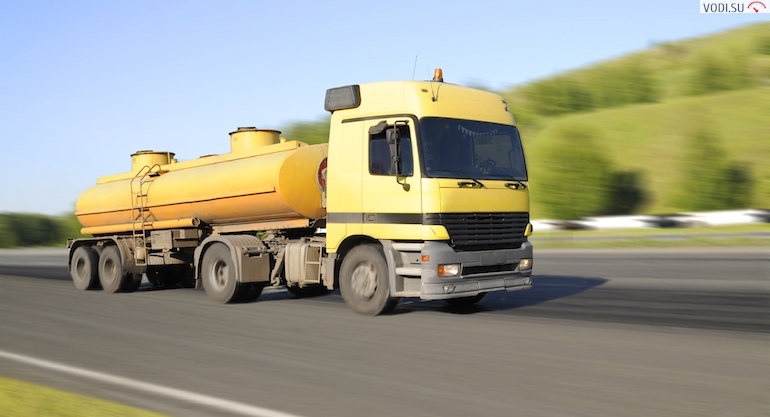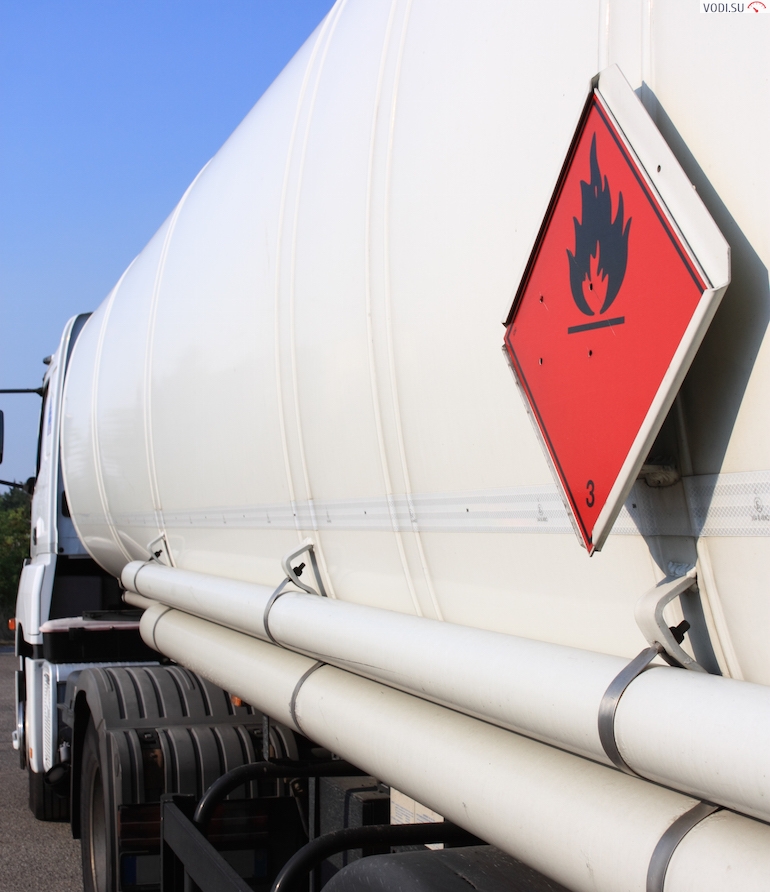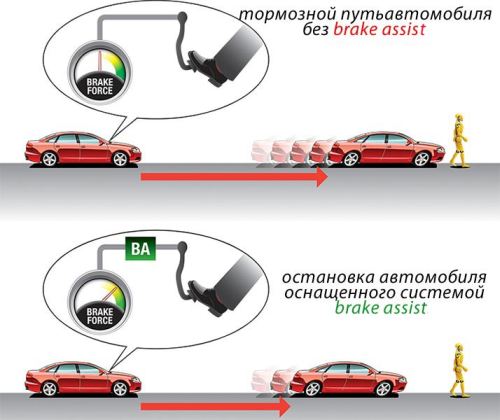
Rules for the transport of dangerous goods by road
On our website Vodi.su, we have already written about the requirements for transport and drivers for the transportation of ordinary goods, oversized. A separate line is the transportation of dangerous goods, and we will talk about it in our today's article.
Definition
First of all, you need to understand the concept of "dangerous goods". It is spelled out in detail in the SDA, in the resolutions approved by the Ministry of Transport, as well as in a special document - ADR (European Agreement on International Road Transport of Goods).
Dangerous goods - this is a cargo that can harm people and nature in the event of an accident, spill, falling into water, soil, and so on. There are several types of danger: poisonous, toxic, radioactive, oxidizing, flammable. There are also hazard classes on a scale of 1 to XNUMX.
We will not list them all in detail, since it is already clear that, for example, fuel trucks transport dangerous goods and in the event of an accident, the consequences can be very serious - spectacular shots from American militants of how fuel tanks explode, everyone saw.

According to the same ADR, there is a huge list of containers in which such substances can be transported: barrels, tanks, metal containers, and so on. Accordingly, all this will be meticulously checked at customs if you are transporting such goods by road transport.
The same strict rules exist in domestic legislation, we will consider them.
Rules for the transportation of dangerous goods in the Russian Federation
The requirements were approved by the Ministry of Transport back in 1995, and since then no special changes have been made to them that affect the general meaning.
The first section of the document is “General Provisions”, which examines the concept itself in detail, provides links to various GOSTs and international agreements.
Organization of transportation
Let's list the main points:
- this activity is licensed, the vehicle is in good condition, the category of the driver complies with the standards, there is a mandatory tachograph;
- transportation is carried out only if there is a permit - it is issued by the Avtodor authorities, the permit can be either for one flight or for a whole group of transport, the same carriers that are engaged in this activity on an ongoing basis receive a permit valid for 6 months;
- all documentation is attached to the cargo, which not only describes the characteristics and hazard class, but also the necessary measures in case of an emergency;
- Loading and unloading is carried out by qualified personnel.
There are also instructions regarding the labeling of vehicles. So, on the sides or tanks apply the appropriate paint and inscriptions - "Flammable" or "Corrosive" and so on. For example, if we are talking about the transportation of diesel fuel, then the tank is painted orange and they write “Flammable”.

Escort, distance, precautions
When transporting in a convoy, the following precautions are observed:
- the distance between the cars in the column is at least 50 meters;
- when driving on difficult routes, in mountainous areas - a distance of at least 300 meters;
- in conditions of insufficient visibility (snow, fog, rain), when visibility is less than 300 meters, delivery may be prohibited - this moment is detailed in the accompanying documentation for each specific consignment;
- along with the driver, there must be a forwarder in the cab, and a column leader is also appointed, who is responsible for compliance with all standards;
- parking may be prohibited in cities if the goods are classified as "especially dangerous".
Separately, such a moment as a power reserve is stipulated. That is, the tanks must be filled so that their capacity is enough for at least 500 kilometers of the route.
If escort is provided, then the traffic police car drives in front of the convoy with a flashing beacon turned on.
An important point is that in a convoy of five or more vehicles, there is another truck of the same category in the convoy, it goes empty and acts as a backup in case of unforeseen emergencies.
Other items
Above, we have given all those requirements that relate directly to drivers and the transportation process. Nevertheless, the document approved by the Ministry of Transport is quite extensive, every detail is indicated in it.
Let's just list the points without dwelling on them too much:
- the relationship of motor transport enterprises with the clientele - the obligations of the consignee and the sender (prepared storage rooms, tanks and other containers must be cleaned after unloading, and so on);
- packaging requirements - determined for all types of cargo;
- requirements for the driver and staff;
- rules for the transportation of certain types of goods.
Of particular interest may be the item on the technical condition of the vehicle:
- the driver must have a set of tools with him to eliminate any breakdowns along the way;
- a fire extinguisher, a shovel, a supply of sand for extinguishing a fire;
- counterstops (shoes) for each wheel;
- first aid kit and means for the neutralization of hazardous substances;
- signs indicating the degree of danger - they are firmly fixed on the car itself;
- orange lights - set at a distance of 10 meters in front of and behind the car in case of an overnight stay or an emergency stop.
It is also stated that it is forbidden to transport explosive cargoes on vehicles on which gas-balloon equipment is installed.

As you can see, the transportation of dangerous goods is a very serious task. However, every day tanks with a variety of substances arrive in Moscow and other cities, including liquefied gas for filling stations, and we very rarely read in the news that there have been any explosions or accidents. This is due to the fact that a lot of attention is paid to ensuring security, and violators are severely punished.
Fines
Two articles are devoted to this problem in the Code of Administrative Offenses - 12.21.2 part 1 and 12.21.2 part 2.
According to the first of them, if transportation is carried out in a vehicle with unsuitable characteristics, and the driver does not have the appropriate permit, he will have to pay 2-2,5 thousand rubles. A penalty in the amount of 15-20 thousand will be imposed on the official, and on legal entities. face - 400-500 thousand rubles
The second article provides for punishment for violation of any other rules for the carriage of goods. According to it, the driver pays one to one and a half thousand, the official - 5-10 thousand, legal. person - 150-250 thousand rubles.
It is worth noting that the fine in this case is not the most severe punishment. The consequences of negligence can be much more deplorable.
Loading…
